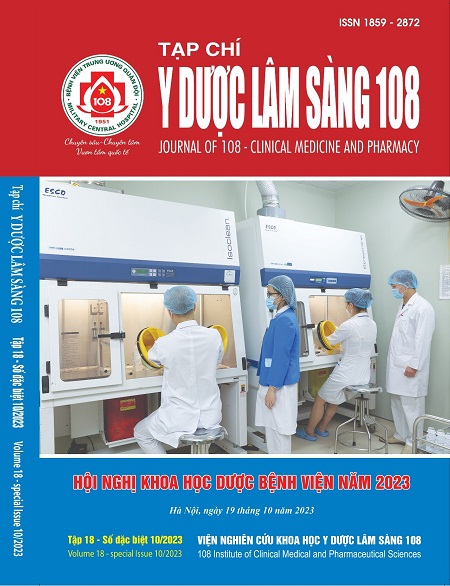Examination of agreement between Beers 2019 and STOPP version 2 in determining potential inappropriate medications at Gia Dinh People’s Hospital
Main Article Content
Keywords
Abstract
Objective: To examine the agreement between Beers 2019 and STOPP version 2 in determining potential inappropriate medications (PIM) in elderly patients and associated factors of PIM. Subject and method: A reprospective, descriptive study was carried out on 333 medical records of inpatients aged ≥60 years, admitted at internal deparments of Gia Dinh People’s hospital from April 2020 to June 2020. PIM was identified using Beers 2019 and STOPP version 2 criteria. The degree of agreement between these 2 criteria was determined using Cohen's kappa coefficient. Result: The rates of patients with PIM based on Beers 2019 criteria and STOPP criteria version 2 were 35.4% and 33.9%, respectively. The most common PIM according to Beers criteria were benzodiazepine, metoclopramide, NSAID use in patients with heart failure, central alpha - agonists, antipsychotics. The most common PIM according to STOPP version 2 were benzodiazepine, first – generation antihistamines, central alpha – agonists, neuroleptic drugs, NSAID use in patients with reduced renal function. There is good agreement between Beers 2019 and STOPP version 2 in determining PIM (К=0.636, p<0.001). Risk of PIM increases in patients using ≥10 medications. Conclusion: Beers 2019 and STOPP version 2 have good agreement. Clinical pharmacists could make interventions based on common PIM to enhance appropriate prescription in elderly patients.
Article Details
References
2. O'Mahony D, O'Sullivan D, Byrne S et al (2015), STOPP/START criteria for potentially inappropriate prescribing in older people: version 2. Age ageing 44(2): 213-218.
3. CDC (2022), Promoting Health for Older Adults, https://www.cdc.gov/chronicdisease/resources/publications/factsheets/promoting-health-for-older-adults.htm, ngày truy cập 01/05/2023
4. UpToDate (2023), Drug prescribing for older adults, https://www.uptodate.com/contents/drug-prescribing-for-older-adults#references, ngày truy cập 01/05/2023.
5. Maher RL, Hanlon J, Hajjar ER (2014) Clinical consequences of polypharmacy in elderly. Expert opinion on drug safety 13(1): 57-65.
6. Valdellós J, Blanco-Reina E, Aguilar-Cano L et al (2019) 2015 Beers Criteria and STOPP v2 for detecting potentially inappropriate medication in community-dwelling older people: Prevalence, profile, and risk factors. European journal of clinical pharmacology 75(10): 1459-1466.
7. Lotta J Seppala, Anne MAT Wermelink Max at al. de Vries (2018) Fall-risk-increasing drugs: a systematic review and meta-analysis: II. Psychotropics. Journal of the American Medical Directors Association 19(4): 371, 11-371. 17.
8. Jayaprakash G., Motallebzadeh N., Mohammadi E. (2019) Evaluation of rationality of geriatric patients’ prescription based on beers criteria in a tertiary care hospital in India. Open access Macedonian journal of medical sciences 7(6): 987.
 ISSN: 1859 - 2872
ISSN: 1859 - 2872
